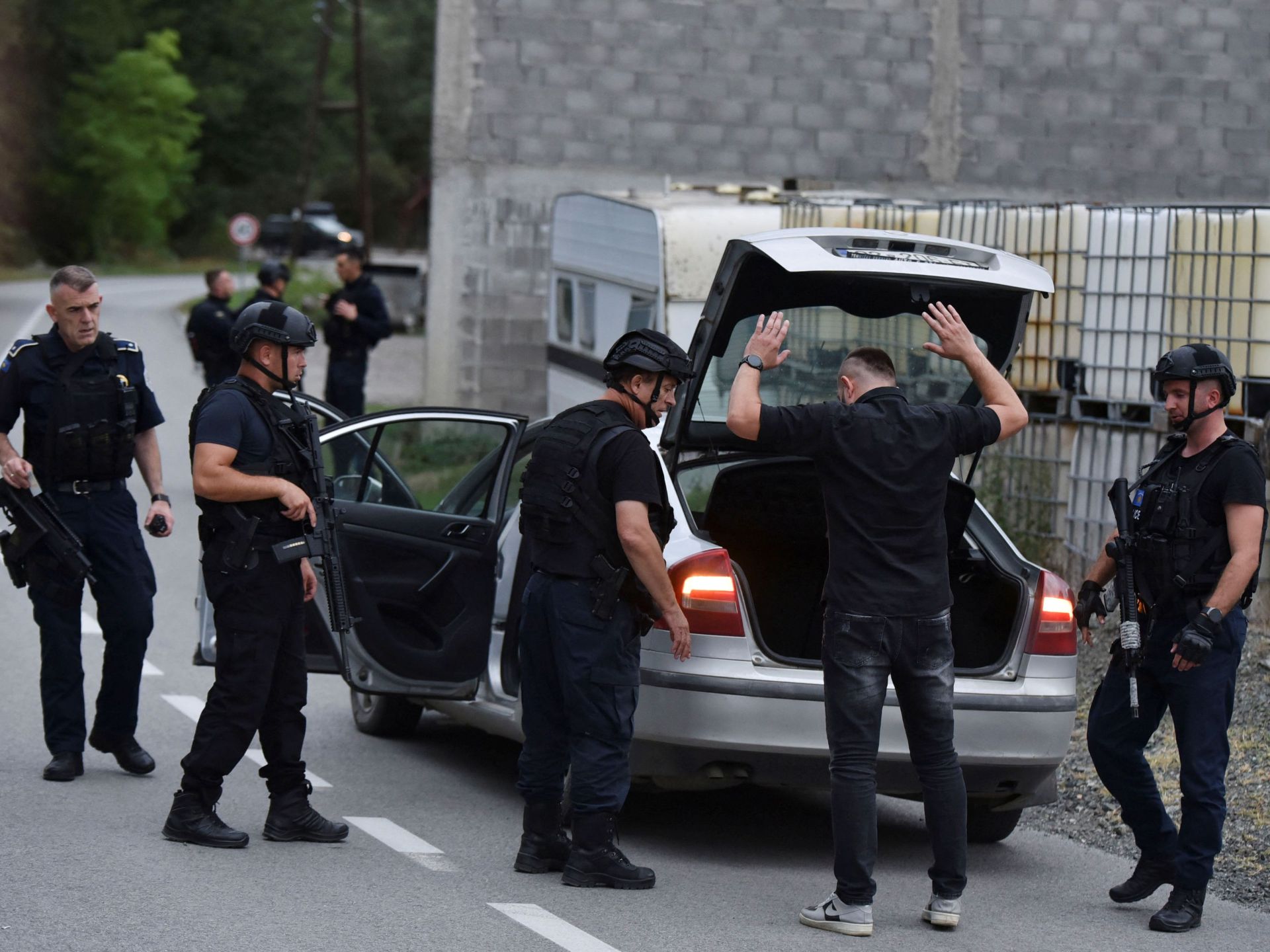The storming of a monastery in northern Kosovo and the accompanying exchange of accusations between Kosovo Prime Minister Albin Kurti and Serbian President Aleksandar Vucic over responsibility for the incident have highlighted the ongoing problems in the Serb-dominated region 15 years after Pristina declared independence.
The situation returned to calm today at a monastery in northern Kosovo where about 30 militants were barricaded for several hours after the killing of a policeman, Interior Minister Caljal Svećla said.
The announcement follows a chaotic day that began early on Sunday when one policeman was killed and another wounded in an ambush on a police patrol near the village of Baniska. The militants fled to a nearby monastery where they barricaded themselves and exchanged fire with Kosovo police for hours, with at least three attackers killed in the fighting.
Here are the facts about this conflict:
What's behind the disagreement?
The independence of the Albanian-majority Republic of Kosovo on February 17, nearly a decade after an armed uprising against Serbian rule in 2008, is recognized by more than 100 countries.
However, Serbia still officially considers Kosovo part of its territory and accuses Kosovo's central government of infringing on Serb rights, but denies accusations of fomenting conflict within its neighbor's borders.
Serbs make up 5 percent of Kosovo's 1.8 million people, while Albanians make up almost 90 percent.
Some 50,<> Serbs in northern Kosovo, on the border with Serbia, express their disapproval of the authority of the Republic of Kosovo by refusing to pay for the energy they use to the state, and often attack police if they try to arrest one.
All Serbs receive concessions from the Serbian budget and pay no taxes either to Pristina or Belgrade.
Why worsen the situation?
The unrest escalated when ethnic Albanian mayors took office in the Serb-majority region of northern Kosovo after Serb-boycotted elections in April, a move that prompted the United States and its allies to rebuke Kosovo.
Last December, Serbs in northern Kosovo set up several roadblocks and exchanged fire with police after a former Serbian policeman was arrested for allegedly assaulting serving police officers during a protest.
Tensions have been rising for months over a dispute over license plates, and Kosovo has for years wanted Serbs in the north to change their pre-independence Serbian license plates to those issued by Pristina as part of its policy of extending control over the entire territory of Kosovo.
In July, Pristina announced a two-month deadline to replace the plates, sparking unrest, before later agreeing to postpone the implementation date to the end of 2023.
In protest at the impending transition, ethnic Serb mayors in the north, as well as judges and 600 police officers, resigned in November last year, disrupting institutions and causing chaos in the region.
Kosovo authorities declare "control" of monastery holed up by militants in the north of the country (French)
What do Serbs ultimately want?
Serbs in Kosovo seek to create an association of Serb-majority municipalities with a great deal of autonomy, which Pristina rejects as a recipe for a small state within Kosovo, effectively dividing the country along ethnic lines.
Serbia and Kosovo have made little progress on this and other issues since committing in 2013 to an EU-sponsored dialogue aimed at normalizing relations, a prerequisite for both before EU membership.
What is the role of NATO and the EU?
NATO maintains a peacekeeping force in Kosovo of 3700,50 troops, a remnant of the original 1999,<> force when it was deployed in <>.
NATO says it will intervene in line with its mandate if Kosovo is at risk of renewed conflict. EULEX maintains some 200 members of the Kosovo Special Police Force, which was launched in 2008 for police training, suppression of corruption and armed gangs.
What are the latest EU peace plans?
US and EU envoys are pressing Serbia and Kosovo to agree to a plan, unveiled in mid-2022, under which Belgrade would stop lobbying to prevent Kosovo from gaining a seat in international organizations, including the United Nations.
Under the plan, Kosovo is also committed to forming an association of Serb-majority municipalities, and the two sides will open representative offices in each other's capital to help resolve existing conflicts.
But talks on normalizing relations between the former wartime rivals stalled last week, with the European Union blaming Kosovo Prime Minister Albin Kurti for his failure to create an association of municipalities.
Kurti, who agreed that such an association should have limited powers and the central government could overturn its decisions, accused the EU mediator of siding with Serbia to pressure him to implement only one part of the deal.
The Serbian president appears ready to approve the plan, as he has warned dismissive nationalists of parliament that Belgrade could face detrimental isolation in Europe if they reject the plan.
But no progress is in sight with powerful nationalist militants on both sides, not just among northern Kosovo Serbs.
What threatens the Serbian population?
The area in northern Kosovo, where Serbs make up the majority of the population, is of real importance as it is an extension of Serbia. Belgrade bears the costs of local administration, salaries of public servants, teachers, doctors and major infrastructure projects.
The Serb population fears losing benefits such as free health care in Serbia once they are fully integrated into Kosovo, which will push them to join a special health care system in Kosovo.

